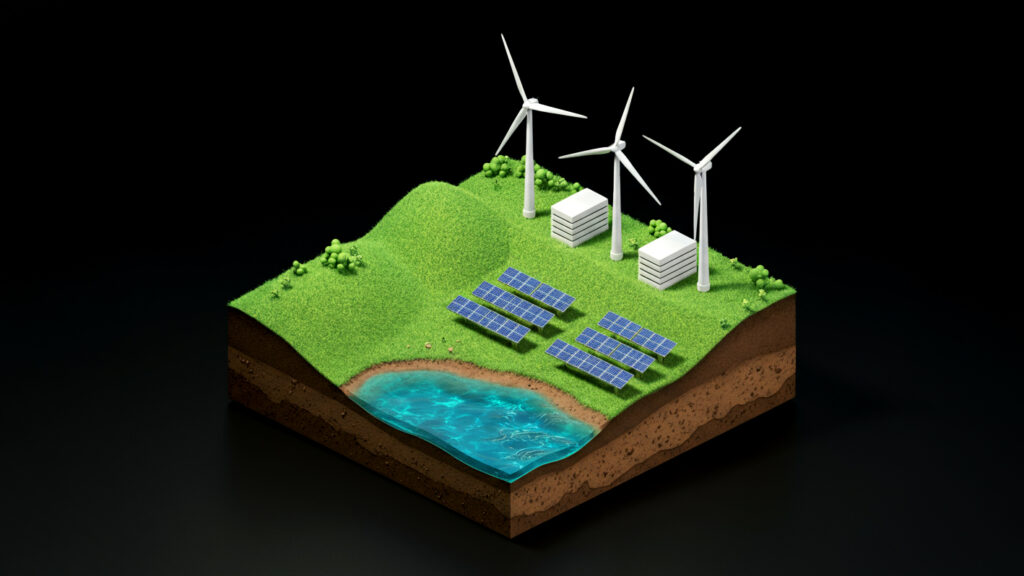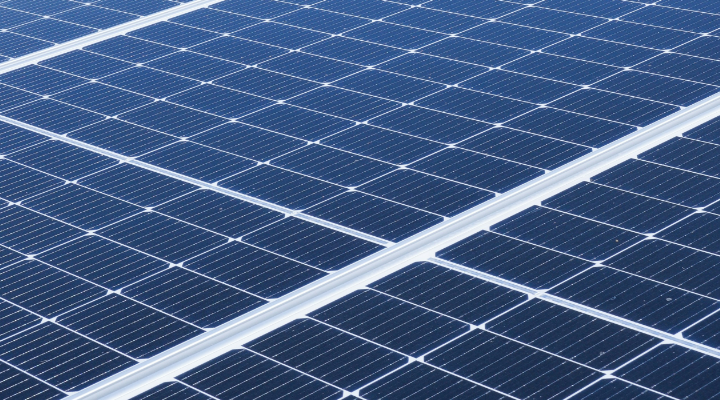Primers
Gigascale Opportunities in Long Duration Energy Storage
Nov 18, 2024

How LDES Could Replace Gas Turbines for Nighttime Baseload Power
Renewable energy is getting closer to powering cities and industry 24/7 —even when the sun doesn’t shine, or the wind doesn’t blow.
The path forward for Long Duration Energy Storage (LDES) is far from simple. Its growth is tightly linked to the expansion of variable renewables, and while federal funding and regulatory support have been critical for early projects, shifting administrative priorities could create challenges—from reduced subsidies to tariffs on clean energy technologies.
Despite potential headwinds, advancements in technology and regional regulatory changes in markets with high renewable adoption are opening a window for LDES to become cost-effective for reliable, clean nighttime baseload power (the consistent supply required to meet grid demand).
| In this article, we’ll cover: |
|---|
| Why Renewable Expansion Needs LDES |
| Defining Long Duration Energy Storage |
| Regulatory Trends Supporting LDES |
| How LDES Gets Cheaper and Scales Up |
| Promising LDES Technologies |
Why Renewable Expansion Needs LDES
Wind and solar have become essential parts of the clean energy grid, but they’re intermittent, meaning they don’t generate power around the clock. As renewable energy supply grows, so does the need for storage solutions that can ensure a stable power supply.
Today’s primary grid storage solutions—pumped hydro and lithium-ion (Li-ion) batteries—won’t be enough to realize the full potential of a cheap, clean grid powered by wind and solar.
- Pumped hydro currently provides 23 GW of grid storage capacity, but building new projects is nearly impossible.
- Li-ion batteries are cost-effective for short-term “peak shaving” (meeting high demand in short bursts) and provide around 15 GW of grid storage with typical durations of 2-4 hours. However, Li-ion may not be the most cost-effective solution for longer durations.
In short, we’ll need new storage technologies to fully capitalize on increased solar and wind generation’s cost savings and climate benefits. Battery storage has grown rapidly over the past 15 years, with annual deployment rates nearing 5 GW. Over the next decade, Bloomberg New Energy Finance estimates that more than 200 GW of new battery storage could be added.
As the market evolves, innovative companies are stepping in to meet the demand for new solutions. Form Energy recently announced a $405 million funding round to scale its iron-air battery, a 100-hour storage solution, setting the stage for long-term grid stability.
Defining Long Duration Energy Storage
Long duration energy storage (LDES) generally refers to systems that store energy for eight hours or more. One key advantage of LDES over Li-ion batteries is that power (measured in kW) and storage capacity (measured in kWh) can be sized independently. Thus, you can increase the capacity without needing to pay for more power.
Though LDES systems may initially cost more per kW than Li-ion, they become more affordable as storage capacity (kWh) increases; this is because costs are spread over a greater energy output, ultimately lowering the per-kWh cost of LDES and making it useful for various applications.
Regulatory Trends Supporting LDES
Today, battery storage is primarily used for peak shaving (providing power during periods of high energy demand when prices spike). Li-ion batteries excel in this part of the energy demand curve, often called the “duck curve,” with Li-ion handling the highest-demand “head” of the curve.
As renewable supply and Li-ion battery storage grow (used for peak demand), there’s increasing interest in expanding storage capacity to cover the “duck’s neck” or the next broader, lower-demand periods. Emerging regulatory support for LDES reflects this shift, incentivizing storage solutions that can meet grid demand beyond short-term peaks.
A quick summary of emerging regulatory support:
- Solar and wind used to get higher capacity credits, but in some cases today, they only get 30% compared with a gas turbine.
- PJM has implemented estimated load carrying capacity (ELCC) to adjust capacity credits based on changing load shapes and the generation/storage mix. MISO has proposed something similar, called direct loss of load (DLOL).
- There are rumors that CAISO and others will follow soon, perhaps adjusting capacity credits proportional to longer duration.
- Mandating LDES is simpler but could add some market distortion (e.g., 3GW in Maryland).
Under the Biden administration, the DOE invested hundreds of millions in LDES pilots and demonstrations. However, the future of federal support remains uncertain. Recent regulatory changes in deregulated electricity markets—such as adjustments to how capacity credits are allocated—are typically lower-profile and less political, as they are proposed by local agencies and approved by federal regulators (appointed by politicians). Meanwhile, public utility commissions and localized incentives will continue to play an essential role in shaping clean energy adoption and are generally more insulated from federal shifts.
While the listed regulatory changes weren’t explicitly designed to support LDES, they highlight a key challenge: without cost-effective storage solutions, the adoption of wind and solar could stall due to grid reliability concerns.
LDES Cost Down and Scale Up
Relatively stable natural gas prices and policies that favor fossil fuels could increase economic pressure on renewables and storage. Tariffs on Chinese batteries and solar panels may further raise costs for solar and wind, challenging LDES in the near term. However, companies with a more domestic supply chain, like Form Energy, could gain an edge.
Despite uncertainty, the next decade presents a critical window for LDES to scale. With technology advancements, LDES could emerge as competitive solutions for storage beyond eight hours, potentially providing nighttime baseload power at costs comparable to efficient gas turbines.
Li-ion is a mature technology produced at scale with falling costs, yet it won’t be cheap enough to displace combined cycle gas turbines (CCGT), a highly efficient type of natural gas power plant. For more on potential cost reduction, Adrian Yao’s analysis of Li-ion and Sodium-ion (Na-ion) cell cost curves, innovations, and forecasts is well worth reading.
Our view is that while Li-ion will continue to dominate for shorter durations, if LDES can achieve an LCOS below $0.10/kWh, it will become competitive with Li-ion. In the long term, we see a path for LDES at scale dropping well below $0.10/kWh, enabling it to begin rivaling CCGT for nighttime baseload power. The National Renewable Energy Laboratory (NREL) Four Phases of Storage Deployment report details how this shift could unfold.
The levelized cost of storage (LCOS) is the total cost of storing and discharging energy over a system’s lifetime, expressed per kWh. It’s a useful benchmark to assess cost-effectiveness, but it has limitations. You can read about the LCOS methodology here.
Alternative baseload technologies like geothermal and fusion are developing, but solar and wind paired with LDES is something we can build and deploy today. An RMI study found that solar and wind plus ~12 hours of storage could supply 90% of grid needs, showing the potential for LDES to transform grid reliability. In the longer term, multi-day storage could be helpful for markets with very high renewables penetration (of 90% or more) and to provide backup capacity when natural disasters strain the grid.
Near-Term LDES Markets as Grid Regulations Evolve
LDES technologies have opportunities in several emerging markets as grid regulations evolve. Here’s a breakdown of key areas where LDES could gain traction.
| What | Why | Size |
|---|---|---|
| Mini- and Off-grid | Higher volatility due to less aggregated supply and demand; Backup generation often relies on oil (>3x the cost of gas); Lacks peaker/reserves; Likely solar + storage + genset hybrid solutions. | ~$10B U.S. mini-grid market in the U.S. today; International could be larger (e.g., 125–250GW in India). |
| Transmission Deferment | Storage is easier to site and faster to deploy than transmission infrastructure; 8-hour storage provides backup when the grid is strained. | ~$0.5–1B |
| Behind-the-Meter | Could reduce data center interconnection time with on-site solar, though longer duration may not add value if only capacity charges and energy are considered. | ? |
| 24/7 Virtual Power Purchase Agreements (PPAs) | Some corporations seek time-matched renewable energy despite higher costs. Expanding peak periods may offer opportunities for innovative structures. | ~$2.5B by 2025 |
We’ve seen companies pitching the potential for LDES to meet data center energy needs when paired with wind and solar. While this works in theory, going entirely off-grid is risky without a lot of extra storage or backup generation, so interconnection to utilities is still a bottleneck. In some cases, LDES could reduce the interconnection rating and speed up/reduce the cost of the process, but we haven’t seen a real example of this yet.
Promising LDES Technologies
Various technologies show promise for LDES, each suited to different applications, from space-constrained sites to large-scale, utility-adjacent installations. For a broad perspective and detailed analysis, check out these resources from the DOE & BCG, McKinsey, and Bloomberg New Energy Finance.
Here are the technologies we see as having the greatest potential:
- Next-generation flow batteries: Using abundant, stable materials to achieve high power output and round-trip efficiency performance (the percentage of energy recovered from storage compared to energy input).
- Pressure/temperature/latent energy systems: Today, these often use off-the-shelf equipment but have significant potential for optimization and performance improvements.
- Novel concepts and entirely new approaches: Technologies like offshore brine pumped hydro and thermal storage to produce steam for existing CCGT (e.g., Sizable and Silo).
As with scaling any technology, the team makes a difference. Successful teams will likely have:
- Deep expertise in utility sales, electricity markets, and commercial/industrial applications
- Strong government relations experience
- Advanced technical knowledge from other industries
- Project development capabilities are a major plus
Despite a shifting landscape, LDES remains a key next step in building a reliable, always-on, clean energy grid. We’d love to connect if you know a team innovating in LDES technology.


